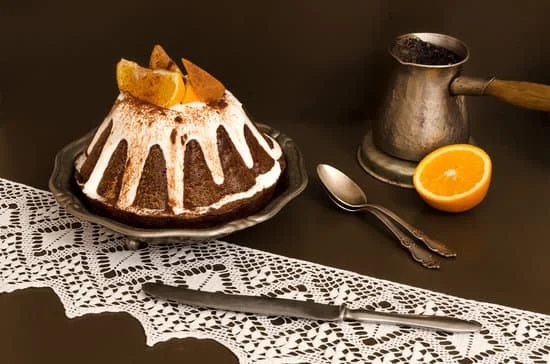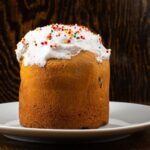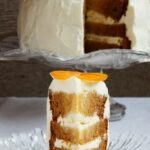What icing do professional cake decorators use? Choosing the right type of icing is crucial in achieving stunning and deliciously decorated cakes.
From buttercream to fondant, each option offers unique qualities that can enhance the overall look and taste of your creation. In this article, we will delve into the various types of icing used in cake decorating, explore their pros and cons, discuss important factors to consider when selecting an icing, and provide insights from professional cake decorators on their top picks and tips.
When it comes to cake decorating, the choice of icing plays a significant role in the final outcome. Buttercream, fondant, royal icing, and ganache are among the most popular options used by professionals in the industry. Each type of icing has its own characteristics when it comes to taste, texture, workability, and longevity. Understanding these differences is essential in determining which icing best suits your specific cake decorating needs.
Factors such as the theme of the cake, weather conditions, and your skill level should all be taken into consideration when choosing an icing for cake decorating. Whether you are creating a whimsical birthday cake or an elegant wedding masterpiece, selecting the right type of icing can make all the difference. Stay tuned as we explore recommendations from professional cake decorators on how to navigate through these factors and find the perfect icing for your next baking project.
Types of Icing Used in Cake Decorating
When it comes to cake decorating, choosing the right type of icing is crucial to achieving the desired look and taste of your masterpiece. Professional cake decorators are well-versed in the different types of icing available, each offering unique properties that cater to various decorating needs. Here are the most popular types of icing used in cake decorating:
- Buttercream: This creamy and versatile icing is a favorite among many decorators for its smooth texture and ability to hold its shape when piped. Made from butter, sugar, and flavorings, buttercream is perfect for creating intricate designs and can be easily colored to match any theme.
- Fondant: Fondant is a pliable icing that gives cakes a sleek and polished finish. Made from sugar, water, and gelatin, fondant is ideal for creating smooth surfaces on cakes and intricate decorations that require precision. While fondant may not be as flavorful as buttercream, it offers a professional look that is perfect for special occasions.
- Royal Icing: Royal icing is a hard-drying icing made from egg whites or meringue powder, powdered sugar, and water. It sets like concrete once dried, making it perfect for detailed decorations such as lacework, flowers, and lettering. While royal icing takes longer to dry compared to other types of icing, it provides a crisp finish that is ideal for intricate designs.
- Ganache: Ganache is a rich mixture of chocolate and cream that creates a smooth and shiny finish on cakes. Used by many professional decorators for its decadent flavor and glossy appearance, ganache can be poured over cakes for a sleek look or whipped into fluffy peaks for frosting. Ganache is also ideal for creating drips on cakes or sculpting 3D decorations.
Each type of icing has its own set of pros and cons when it comes to taste, texture, workability, and longevity. Buttercream may offer a creamy texture but can melt in warm weather, while fondant provides a smooth finish but may not be as tasty as other options. Royal icing dries hard but requires patience during application, while ganache can be rich in flavor but may not hold up well in humid conditions.
Understanding the properties of each type of icing will help you make an informed decision when choosing the best option for your cake decorating needs. Whether you prioritize taste or aesthetics, there is an icing out there that will suit your preferences. Professional cake decorators often mix different types of icings to achieve the perfect balance between flavor and design on their creations.
Pros and Cons of Each Type of Icing
Buttercream icing is a popular choice among both amateur and professional cake decorators due to its delicious flavor and creamy texture. It is versatile and easy to work with, making it ideal for various types of cake designs.
The taste of buttercream can be adjusted by adding different flavorings such as vanilla, chocolate, or fruit extracts. However, one drawback of buttercream is that it can melt in warm temperatures, so it may not be suitable for outdoor events during hot weather.
Fondant is another type of icing commonly used by professional cake decorators for its smooth and flawless finish. It provides a clean canvas for intricate designs and decorations on cakes. Fondant has a sweeter taste compared to buttercream and offers a chewy texture when eaten. On the downside, fondant can be tricky to work with for beginners as it requires more skill and practice to achieve a seamless look on cakes.
Royal icing is a popular choice for intricate piping work and delicate decorations on cakes. It dries hard, which makes it great for creating 3D elements like flowers or lace patterns. Royal icing has a bright white color that serves as an excellent base for vibrant colors when painting or airbrushing designs on cakes.
However, royal icing can have a very firm texture when dried, which may not appeal to everyone’s taste preferences. Additionally, it can be time-consuming to prepare and requires precise consistency for successful decorating results.
Factors to Consider When Choosing an Icing for Cake Decorating
When it comes to choosing the right icing for cake decorating, there are several factors that professional cake decorators consider to ensure a successful and visually appealing outcome. One of the first things to take into account is the theme of the cake you are working on.
Different types of icing lend themselves better to certain designs and styles. For example, buttercream is great for creating intricate textures and details, while fondant is ideal for achieving a smooth and polished look.
Weather also plays a crucial role in determining which icing to use for cake decorating. High humidity can cause certain icings like buttercream to become too soft or lose their shape, while extreme heat can cause fondant to melt or become sticky. It’s important to choose an icing that can withstand the environmental conditions your cake will be exposed to, ensuring that your hard work doesn’t go to waste.
Another key factor to consider when selecting an icing for cake decorating is your skill level. Some icings require more experience and practice to work with effectively, so it’s essential to choose one that aligns with your abilities.
Buttercream may be more forgiving for beginners due to its flexibility and ease of application, while royal icing may be better suited for those with more advanced piping skills. Ultimately, selecting the right icing based on the theme of the cake, weather conditions, and your skill level will help you achieve professional-looking results every time.
- Consider the theme of the cake
- Take into account weather conditions
- Assess your skill level
Top Picks From Professional Cake Decorators
Professional cake decorators often have their go-to icing choices when it comes to creating stunning and delicious cakes. One of the most popular options among professionals is buttercream icing. Buttercream is versatile, easy to work with, and offers a smooth finish that is perfect for piping decorations and creating intricate designs. Its creamy texture and rich flavor make it a favorite among both decorators and clients alike.
Another common choice among professional cake decorators is fondant icing. Fondant provides a smooth, seamless finish that creates a polished look on cakes. It is ideal for sculpting detailed decorations, covering large cake surfaces, and achieving a flawless appearance. Although fondant may not be as tasty as buttercream to some people, its aesthetic appeal makes it a preferred option for special occasions like weddings and formal events.
Royal icing is another type of icing that professional cake decorators use for specific purposes. This type of icing dries hard, making it ideal for intricate designs like lacework, fine details, and delicate sugar flowers.
Royal icing sets quickly and can be used to create decorative pieces in advance without worrying about them losing shape or falling apart. Despite its limitations in terms of taste and flexibility compared to other icings, royal icing remains a valuable tool in the hands of skilled decorators.
| Buttercream Icing | Fondant Icing | Royal Icing |
|---|---|---|
| Versatile and easy to work with | Creates smooth finish | Ideal for intricate designs |
| Creamy texture and rich flavor | Polished look on cakes | Dries hard for detailed decorations |
Tools and Techniques for Applying Icing to Cakes
Professional cake decorators use a variety of tools and techniques to apply icing to cakes, creating beautiful and intricate designs. One of the most essential tools in their arsenal is the piping bag, which allows for precise application of icing in different shapes and patterns.
Piping bags come in various sizes and materials, such as disposable plastic or reusable cloth, giving decorators flexibility in their designs. By using different tips with the piping bag, decorators can create everything from delicate lace patterns to bold floral decorations.
Another important tool for applying icing to cakes is the spatula, which helps achieve smooth and even surfaces. Offset spatulas are commonly used by professional decorators for spreading buttercream or ganache on cakes before adding more intricate details with piping bags. The flexibility of the spatula allows for easy maneuvering around the contours of the cake, ensuring a flawless finish.
In addition to piping bags and spatulas, molds are often utilized by professional cake decorators to create three-dimensional designs with fondant or gum paste. Molds come in various shapes and sizes, allowing decorators to add intricate details like flowers, leaves, or geometric patterns to their cakes.
By pressing fondant or gum paste into molds and carefully attaching them to the cake’s surface, decorators can elevate their designs and impress clients with stunning cakes that look like works of art.
| Tools | Techniques |
|---|---|
| Piping Bags | Precise application of icing in different shapes and patterns |
| Spatulas | Achieve smooth and even surfaces |
| Molds | Create three-dimensional designs with fondant or gum paste |
Common Mistakes to Avoid When Working With Different Types of Icing
When it comes to cake decorating, using the right type of icing is crucial for achieving a professional finish. However, even with the best ingredients and tools, there are common mistakes that can easily derail your decorating efforts. By being aware of these pitfalls and learning how to avoid them, you can ensure a seamless decorating experience that results in a beautifully decorated cake.
Not Allowing Icing to Reach the Right Consistency
One of the most common mistakes when working with different types of icing is not paying attention to the consistency of the icing. Each type of icing has its own ideal consistency for decorating – whether it’s buttercream that needs to be smooth but hold its shape, fondant that needs to be pliable but not sticky, or royal icing that needs to form stiff peaks.
To avoid this mistake, make sure to follow the recipe instructions carefully and adjust as needed by adding more liquid or sugar until you reach the desired consistency.
Rushing the Process
Another mistake that many beginners make when working with different types of icing is rushing through the decorating process. Whether it’s trying to apply intricate designs too quickly or not allowing enough time for each layer of icing to set before adding another, rushing can lead to smudged decorations, uneven textures, and overall messy-looking cakes.
Take your time when decorating and allow each step to properly set before moving on to the next – patience is key in achieving professional-looking results.
Using Improper Tools
Using the wrong tools when working with different types of icing can also lead to frustrating decorating experiences. Piping bags with small tips may not be suitable for thicker icings like ganache, while spatulas may not give you the precision needed for intricate designs with royal icing. Make sure you have the right tools for the job and practice using them before attempting a complex design.
Investing in quality tools will not only make your decorating process smoother but also elevate the overall look of your finished cake. Remember: proper preparation leads to perfect decoration.
The Science Behind Icing
When it comes to cake decorating, the type of icing you choose can make a world of difference in the final outcome of your creation. Each type of icing has its own unique set of ingredients that can affect the texture and consistency of the final product. Understanding the science behind icing can help you make informed decisions when choosing the right icing for your cake decorating needs.
One of the most common types of icing used in cake decorating is buttercream. Buttercream typically consists of butter, powdered sugar, vanilla extract, and a liquid such as milk or cream. The ratio of these ingredients can greatly impact the texture and consistency of the buttercream. For example, increasing the amount of butter in the recipe can result in a richer and creamier buttercream, while adding more powdered sugar can make it sweeter and stiffer for intricate piping designs.
Fondant is another popular choice for professional cake decorators due to its smooth and flawless finish. Fondant is made from a mixture of sugar, water, gelatin, and glycerin, which gives it its pliable texture. The key to working with fondant lies in finding the right balance between elasticity and firmness.
Too much gelatin can make fondant stiff and difficult to work with, while too little can cause it to tear easily. Understanding how each ingredient affects the fondant’s texture is essential for achieving professional-looking results in your cake decorating projects.
Conclusion
In conclusion, finding the perfect icing for your cake decorating needs can make a significant difference in the final outcome of your creations. The type of icing you choose will depend on various factors such as taste, texture, workability, and longevity. Professional cake decorators often use a combination of different icings like buttercream, fondant, royal icing, and ganache to achieve different effects and meet specific requirements.
When considering what icing to use for your cake decorating projects, it is essential to take into account the theme of the cake, weather conditions, and your skill level. Some icings may be better suited for intricate designs and decorations, while others may be more suitable for simple and elegant cakes. Experimenting with different types of icing will help you find what works best for your style and preferences.
In the end, the key is to practice and explore the possibilities that each type of icing offers. By following the recommendations and tips from professional cake decorators and mastering the tools and techniques needed for applying icing to cakes, you will be able to elevate your decorating skills and create stunning masterpieces that not only look beautiful but also taste delicious. Remember to have fun with your creations and let your imagination run wild.
Frequently Asked Questions
What Icing Is Used on Professional Cakes?
Professional cakes are typically decorated with various types of icing, depending on the design and flavor preferences. Some common icings used on professional cakes include buttercream, fondant, ganache, and royal icing. Each type of icing has its own unique properties and uses in cake decorating.
What Is the Best Icing for Decorating Cakes?
When it comes to decorating cakes, many bakers and professionals prefer using buttercream icing. Buttercream is versatile, easy to work with, and can be flavored and colored in countless ways. Its smooth texture allows for clean lines and intricate designs, making it an ideal choice for most cake decorating needs.
What Kind of Buttercream Do Professionals Use?
Professionals often use Swiss meringue buttercream or Italian meringue buttercream for their cakes. These types of buttercream are made by incorporating a cooked sugar syrup into whipped egg whites, which results in a stable and smooth frosting that holds up well in different temperatures.
Swiss and Italian meringue buttercreams have a more luxurious taste compared to American buttercream, making them a popular choice among professional bakers.

Welcome to our cake decorating blog! My name is Destiny Flores, and I am the proud owner of a cake decorating business named Cake Karma. Our mission is to provide delicious, beautiful cakes for all occasions. We specialize in creating custom cakes that are tailored specifically to each customer’s individual needs and tastes.





